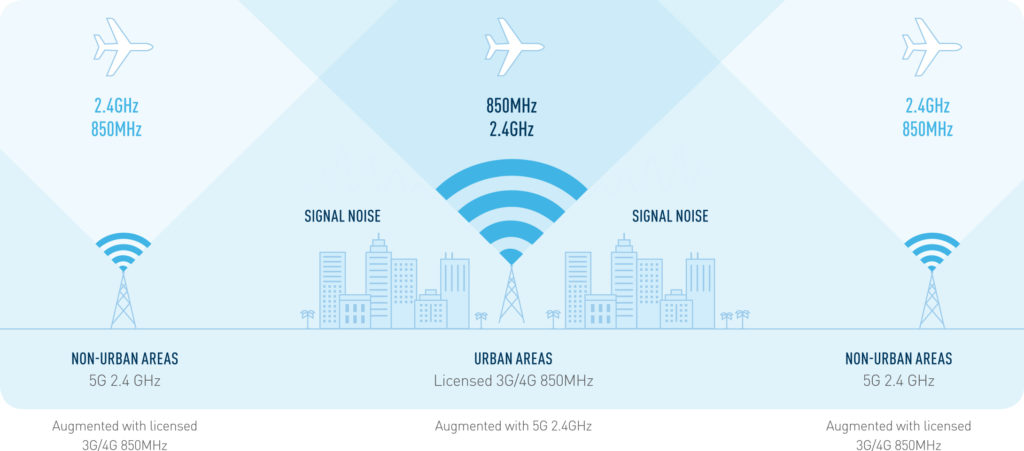
Gogo plans on launching its fifth generation ATG network in 2021. Photo, courtesy of Gogo.
Gogo is developing new antennas and modems designed to enable the world’s first in-flight connectivity (IFC) 5G air-to-ground (ATG) network by 2021.
John Wade, president of commercial aviation for Gogo, told Avionics International that the new 5G network will leverage the existing 250 towers that enable its current 3G and 4G IFC networks. The 5G network will use unlicensed spectrum in the 2.4 GHz band, with a new modem and beam-forming technology providing the airplane-to-ground station link.
“The 5G network that we announced, you can think of it as an overlay of our current ATG network,” Wade said. “We’ll be adding some additional antennas and modems to the ground network, and the same thing on the airplane. There will also be a new antenna and one additional line replaceable unit required to enable 5G capability on aircraft that use our existing ATG network.”
Gogo will continue to operate its existing 3G and 4G ATG networks throughout U.S. and Canadian airspace alongside the future 5G network. At the moment, Gogo has not secured a launch customer for the 5G network, but is focused on introducing an upgrade path for operators currently using the 3G and 4G networks it operates. There are currently 7,042 business and commercial aircraft that are equipped with Gogo’s ATG technology.

A coverage map for Gogo’s 5G ATG network. Photo, courtesy of Gogo.
Wade said Gogo is not commenting on what type of connection speeds are expected with its own 5G network for airplanes. However, he said the 5G network will support video streaming for passengers in-flight. He said the IFC service provider also wants the new 5G modem to support cockpit connectivity for pilots.
“We’re not talking specifically about speeds right now, but we do think 5G will be very comparable to 2KU in terms of performance,” Wade said.
While Gogo is not targeting aviation segments outside of commercial airlines and charter operators for 5G, Wade set there are already military aircraft equipped with Gogo’s ATG technology using it in limited capacity primarily for intelligence, surveillance and reconnaissance (ISR) applications. The 5G network could also be leveraged for that purpose.
“The military is not a market we’re specifically targeting, and there are some challenges when it comes to providing connectivity for rotary wing aircraft,” Wade said. “However, we do currently have a limited number of military aircraft using our current ATG network for ISR missions. If there is military interest in the 5G network for ISR, we will look to explore that.”
Gogo’s plan to launch the new 5G network comes after a financially challenging 2018, when revenue from in-flight internet service on commercial airlines was down. In contrast, equipment and service revenue for its business aviation division increased during the same period. Those trends continued into the first quarter of 2019, where overall revenue declined to $200 million from $232 million during the same period in 2018.
Correction: This article has been updated to reflect that the total number of business and commercial aircraft equipped with Gogo’s existing ATG connectivity is 7,042.